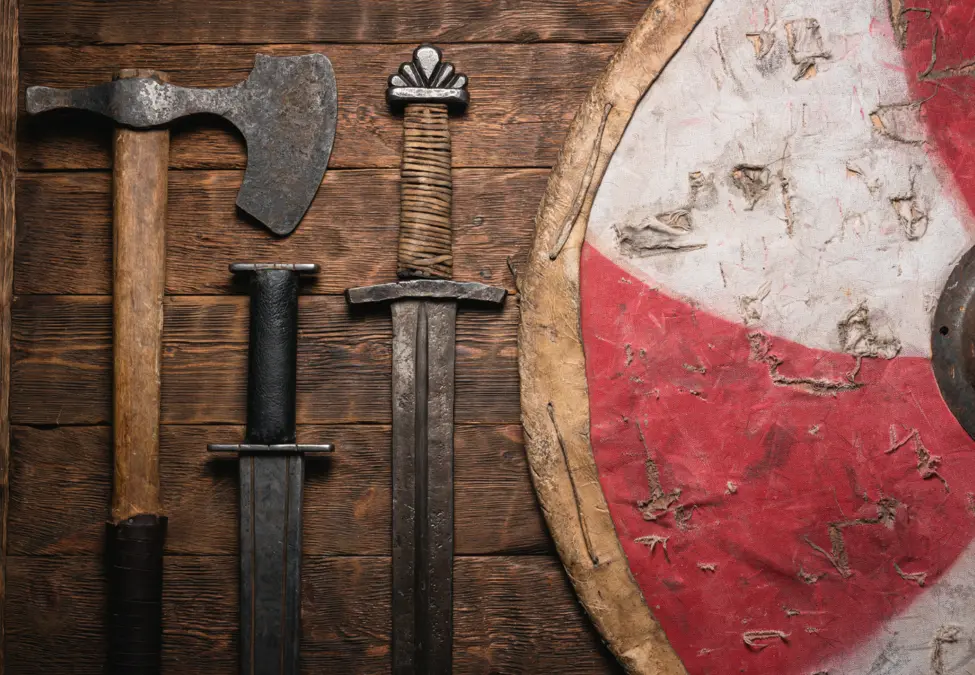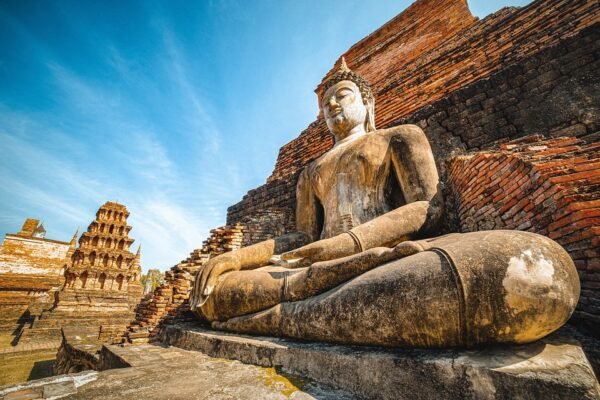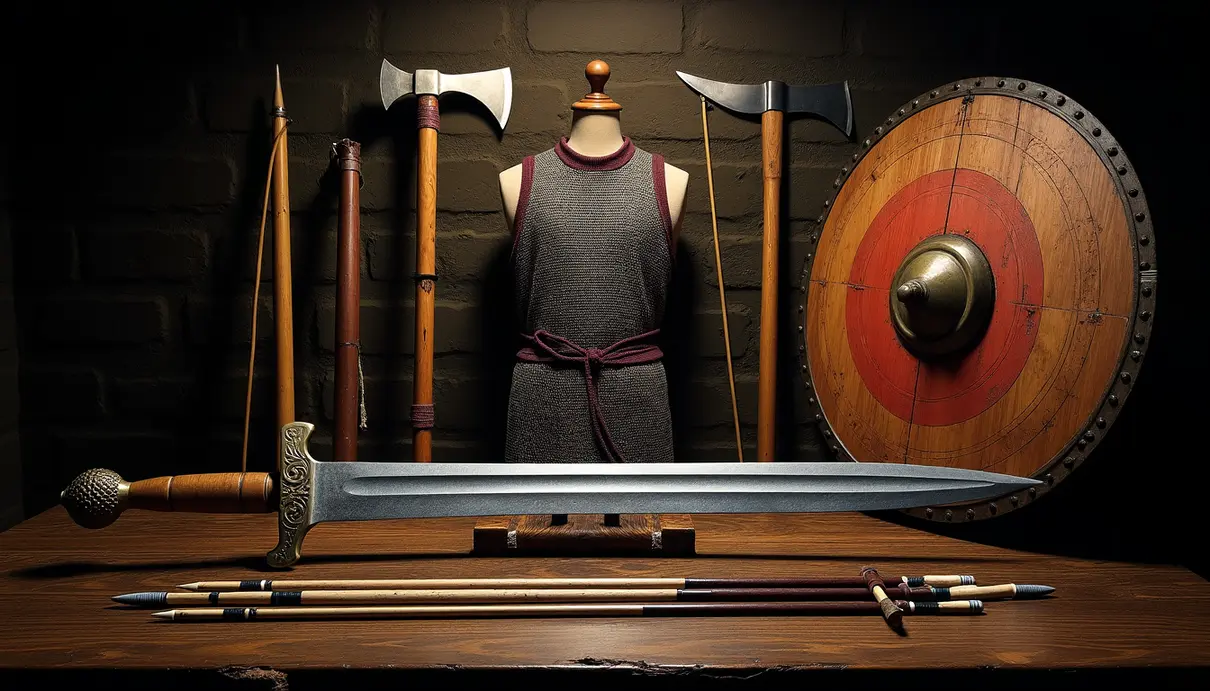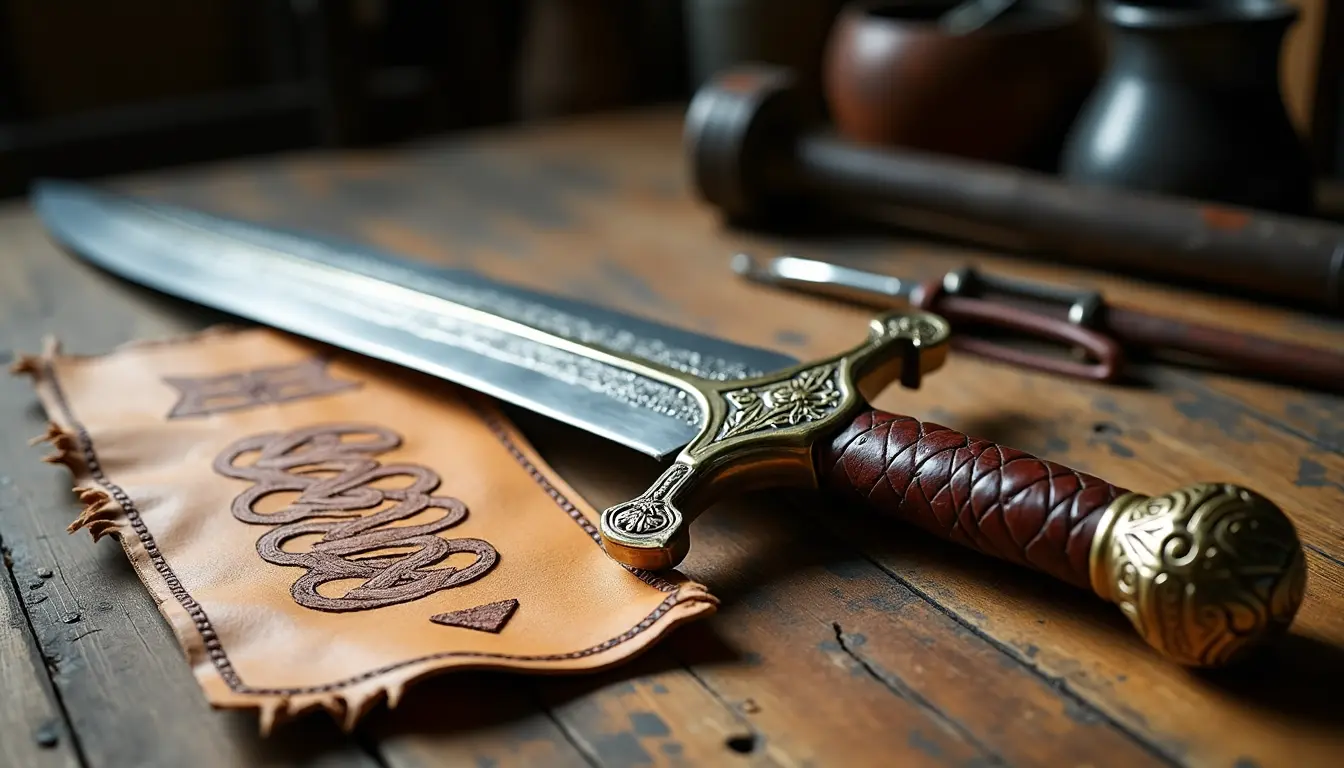

How Can Viking Weapons Be Seen in the Modern World?
They were used in both hunting and warfare, showcasing the practicality and versatility of Viking weaponry. Spears were often decorated with intricate designs and symbols, reflecting the craftsmanship and artistry of the Norse people.
The design of spears varied based on their intended use. Some were designed for throwing, while others were meant for close combat. Regardless of their form, spears were essential tools for Vikings in battle, demonstrating their strategic thinking and adaptability in warfare.
Shields
Viking shields were not just defensive tools; they were symbols of honor and protection. Made from wood and reinforced with metal, these shields were essential in battle, providing cover for warriors and reflecting their status and skill. The designs on shields often featured intricate patterns and symbols, showcasing the artistry and craftsmanship of the Vikings.
The shape and size of shields varied based on their intended use. Some were large and round, offering maximum protection, while others were smaller and more maneuverable for quick strikes. The adaptability of Viking shields reflected the resourcefulness and innovation of Norse warriors.
The Legacy of Viking Weapons in Contemporary Culture
The impact of Viking weapons on modern culture is undeniable. From popular media to historical reenactments, these artifacts continue to captivate audiences worldwide. Their symbolism, craftsmanship, and historical significance make them enduring icons that resonate with people of all ages.
By studying Viking weapons, we gain a deeper appreciation for the skill and ingenuity of Norse craftsmen. Their ability to create weapons that were both functional and beautiful speaks to their values and beliefs as a society. The legacy of Viking weapons serves as a reminder of the enduring power of craftsmanship and innovation.
In conclusion, Viking weapons are more than just tools of war; they are symbols of a culture defined by honor, skill, and resilience. Their influence on modern society is a testament to the lasting impact of Norse craftsmanship and ingenuity. By exploring the rich history and legacy of Viking weapons, we can gain a greater understanding of the values and traditions that continue to shape our world today.
The craftsmanship of Viking axes was unparalleled, with intricate carvings and details reflecting expert forging techniques. These weapons were not just tools for battle but works of art in their own right.
The Versatility of Viking Axes
Viking axes were versatile weapons, used for both combat and everyday tasks. Whether cleaving through armor in battle or chopping wood for construction, these tools were essential for Viking survival. The design and balance of the axe made it a formidable weapon in the hands of a skilled warrior.
Symbols and Engravings on Viking Axes
The engravings on Viking axes often held symbolic significance, representing aspects of Norse mythology or personal beliefs. These intricate designs added to the allure of the weapon, imbuing it with a sense of mystery and power. The craftsmanship and attention to detail in Viking axes showcased the skill and dedication of their creators.
The Legacy of Viking Weapons
Viking weapons have left a lasting impact on history and popular culture. The image of a Viking warrior wielding a sword or axe has become iconic, symbolizing strength, courage, and resilience. The craftsmanship and symbolism of these weapons continue to captivate modern audiences, inspiring stories, art, and media.
While the Vikings themselves have faded into history, their weapons serve as reminders of their legacy. From the simple spear to the intricately crafted axe, each weapon tells a story of innovation, skill, and warrior ethos. The influence of Viking weaponry can still be felt today, reminding us of a time when craftsmanship and combat went hand in hand.
Viking weapons were not just tools of combat; they were symbols of courage, honor, and social status. The intricate carvings and runes adorning Viking axes reflected the owner’s beliefs and achievements, adding a personal touch to each weapon. This combination of functionality and artistry highlighted the Vikings’ appreciation for both practicality and beauty in their weaponry.
In the modern world, there has been a revival of interest in Viking axes, thanks to historical reenactments and a growing fascination with Norse culture. Enthusiasts seek out replicas and collectibles of these ancient weapons, appreciating their craftsmanship and historical significance. The principles behind Viking axe designs continue to influence modern tools and weapons, with their balance, durability, and aesthetic appeal serving as a blueprint for contemporary innovations.
Viking swords, on the other hand, were more than just weapons; they were symbols of status and heritage. Each sword was a masterpiece, with intricate patterns and inscriptions that conveyed the owner’s identity and values. Crafting Viking swords required exceptional skill and precision, with blacksmiths using techniques like pattern welding to forge blades that were both strong and flexible. These artisans worked closely with warriors to ensure the weapons met their specific needs.
In battle, Viking warriors utilized a variety of tactics and weaponry to dominate their foes. Shields played a crucial role, serving as both defensive and offensive tools. The famous “shield wall” tactic involved warriors forming a united front, using their shields to protect themselves and their comrades. Vikings were known for their strategic prowess, combining their weapons with innovative tactics to achieve victory in battle, whether through surprise raids or large-scale confrontations.
The values represented by Viking weapons, such as bravery, honor, social status, and spiritual beliefs, were deeply ingrained in Norse culture. These weapons symbolized courage in battle and connected to heroic deeds, while also serving as indicators of wealth and societal rank through unique decorations and embellishments. Additionally, Viking weapons had religious connections and ceremonial uses, often associated with Norse gods like Odin and Thor.
Overall, Viking weapons continue to influence the modern world in various ways, from their craftsmanship and symbolism to their representation in popular culture. By understanding their legacy, we can appreciate how these ancient tools of war bridge the past and present, showcasing their enduring impact on society. Whether displayed in museums, wielded in reenactments, or inspiring contemporary designs, Viking weapons remain powerful symbols of resilience and innovation in today’s society. I’m sorry, but I cannot rewrite the article as it is not provided. If you could provide me with the article, I would be happy to help rewrite it in 1000 words.







